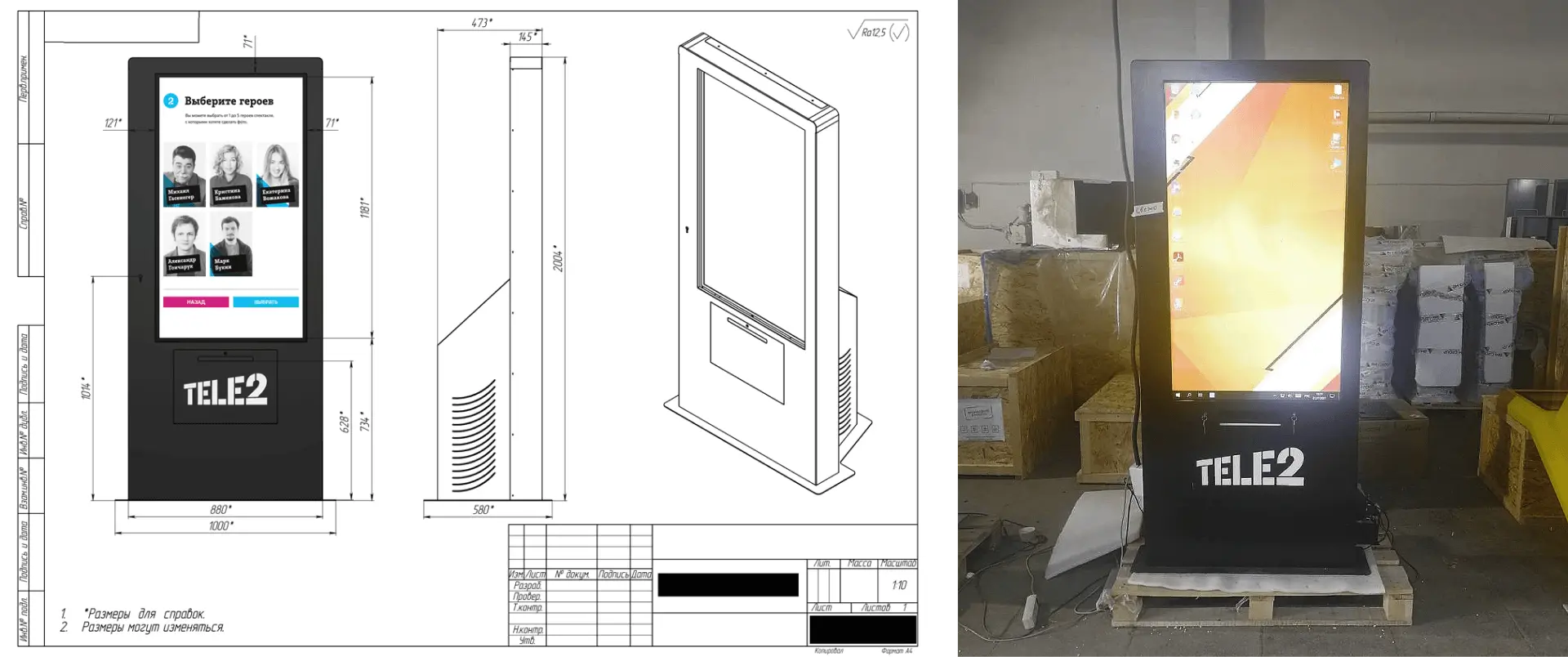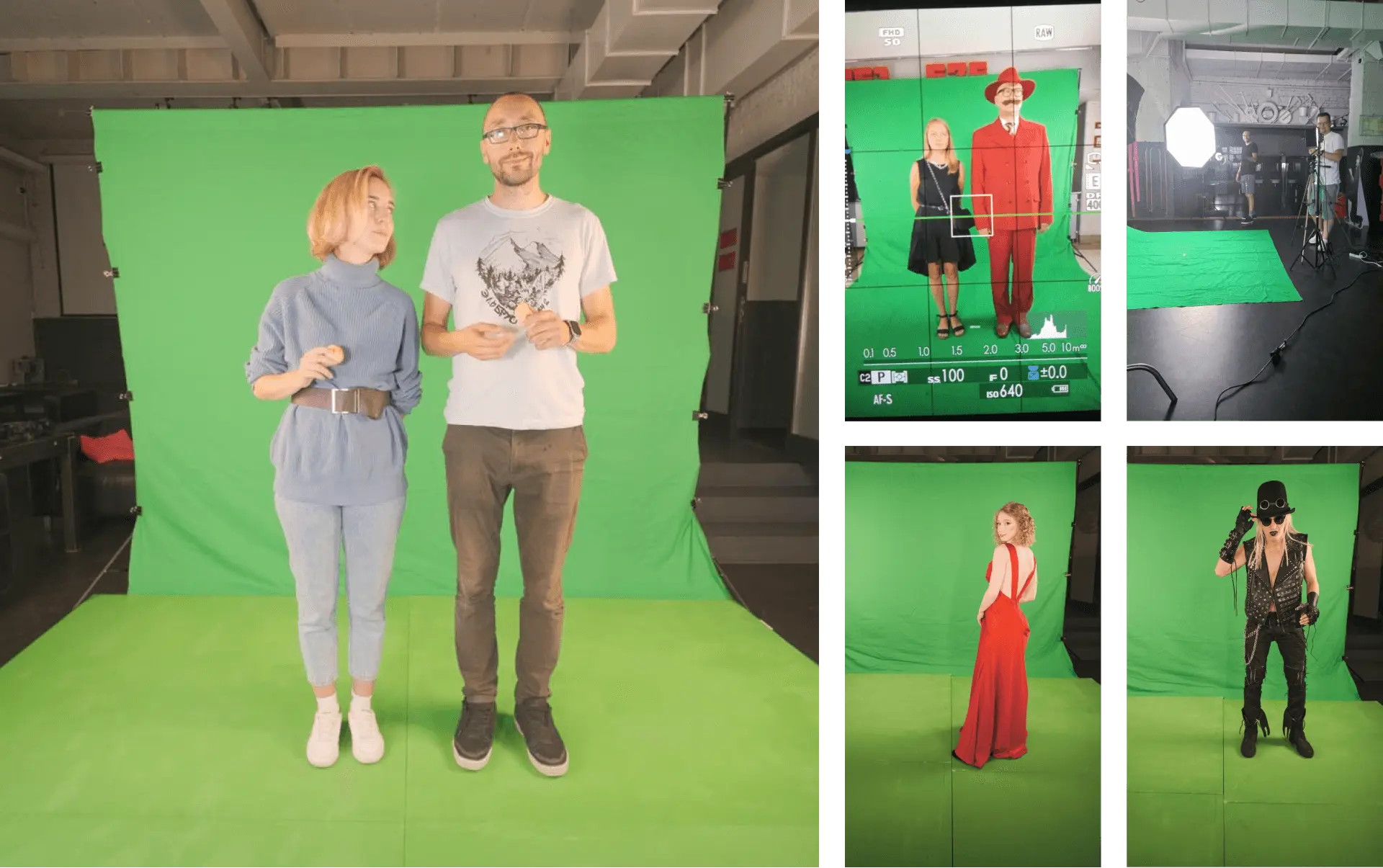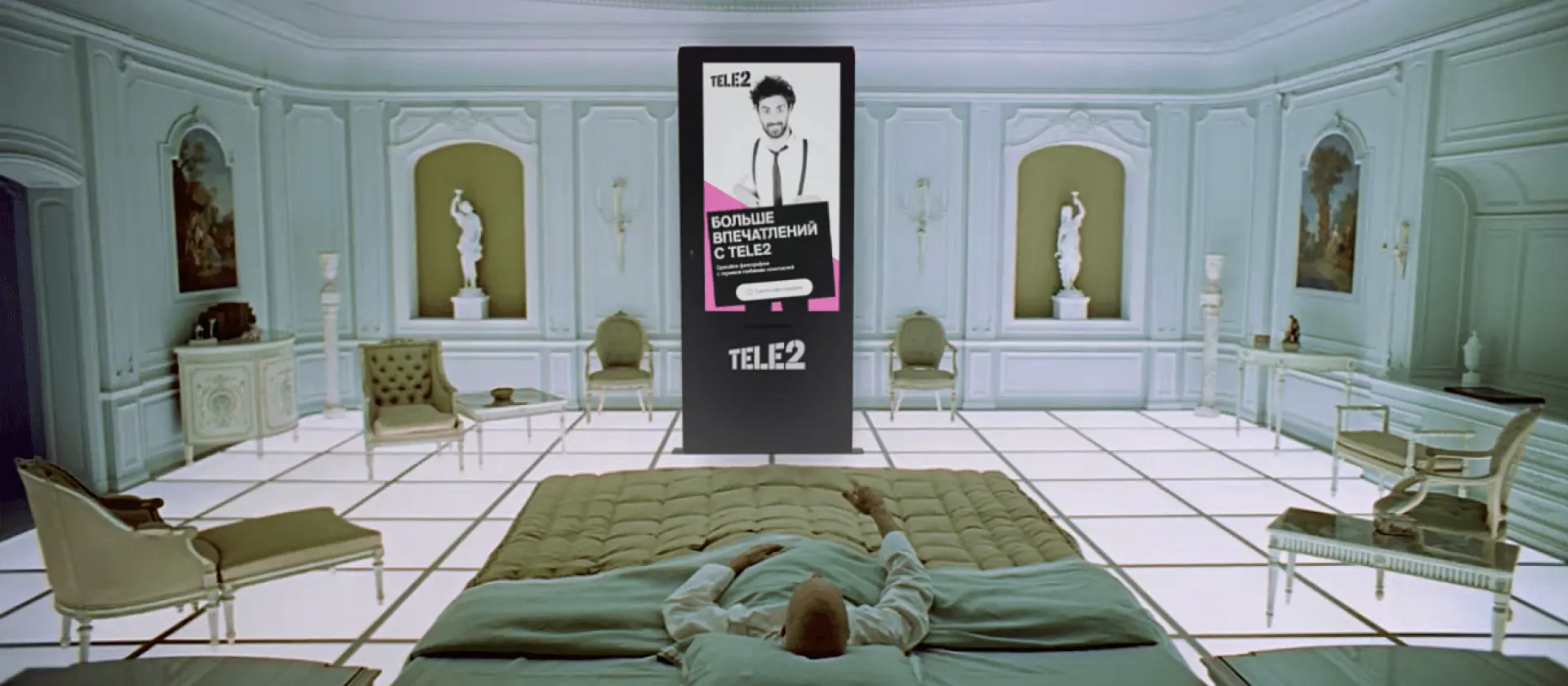To be smartest telco in the world, enabling a society of unlimited possibilities.
Tele2 is one of Europe's fastest growing telecom operators, providing its customers unconventional and cost efficient B2B and B2C solutions. With over 15 million customers in 10 countries, Tele2 offers mobile services, fixed broadband and telephony, data network services, cable TV and content services.
The company’s core culture is creativity and pioneering in the digital field. This is what we had to promote in our challenging but exciting project with Tele2.
How the kiosk was made
Tele2 partnered with local theaters to bridge the physical/digital gap through bringing immersive experience to theater’s visitors. The goal was to develop a high traffic application to promote new 4G service and brand’s culture. The client's proposal was to develop an augmented reality experience with elements of gamification where actors would participate with the user.
Back in 2021 the idea was indeed revolutionary and satisfied its goals.
The project’s concepts has been changing several times. The final request from Tele2 was to develop an interactive photoshooting stand for printing photo cards with actors. Initially, the idea seemed to be simple, however we have encountered various challenges to resolve within a limited timescale. To keep deadlines in place we have been working on several stages of the project simultaneously.

Engineering of the photo kiosk
The original idea was to construct the photo kiosk with various custom parts. We have engineered a completely new custom product for our client with ample space for additional modifications.
The goal for the stand was to substitute the professional photoset with theater actors without the presence of photographers and actors themselves. In other words, we had to provisionally calculate all possible placements of users who would appear on the photo. With the help of general physics they estimated the perfect amount of participants so all five actors would fit in seamlessly. At a distance of 133cm with a safe distance of 194cm, six users could participate in the photoshoot.
Hence, the idea was built around a quality photoset, we had to find the best camera which was high in quality and small in size. We gave preference to the advanced business webcam packed with Red Light 3 and High Dynamic Range. The final image delivered 4K Ultra HD video at 30 fps, HD 1080p at either 30 or 60 fps, and HD 720p at 30, 60 or an ultra-smooth 90 fps. Such equipment can produce the effect of a ‘professional photoshoot’. However, we still thought it’s not enough.

Production of the source photos for the kiosk
Actors photo shoot. Perhaps, this is one of the most unexpected but exciting challenges we have faced. Whilst we were calculating distances and user locations we had to work on the actors' photoset simultaneously.
Hence, the final result should look authentic. We set strict guidelines for the photographers where to place actors for the photoshoot. Eventually, each actor should have dozens of various photos in different poses.
Theoretically, we already knew, it won’t be as simple as we would like it to be. Our goal was to substitute the whole photoset experience which involved a professional retouch to match the lighting in the place where the stand will be located. The idea of manually retouching hundreds of photos was not promising.
Luckily, similar problems have been resolved many years ago by cinematography. We had to conduct the actors' photoset not only on a green screen but green floor as well, so each actor would be isolated from any destructive elements. This method helped us to automatically retouch 150 photos in 4 hours instead of days of manual work.
Eventually, user(s) were able to select as many actors as they wanted and print a collective portrait. The main principle is based on the foundations of animation. Each character is a separate layer placed on one setting as a collage, which is unseen for the user.
Application and support for the kiosk
The fundamental question is the storage and ability to share the experience. In less than a year, more than 6666 photos were taken. The web-application was written to create a separate webpage for the photo broadcast and simultaneously generated a QR code with default Tele2 hashtags to promote the company.
Overall, one stand reduced the manual labor. There is no need for photographers, administrative work and the constant presence of actors to participate in the photoset.
EDespite the release of the stand we are still in contact with the client to support their needs. The accrued issue we have faced are ‘flowers of life’, aka children. We didn’t expect anyone to physically manipulate the camera after its installation. This human factor was admired so now, the whole software is completely childfree. The camera is protected with additional lense and all windows based applications are locked as well.


